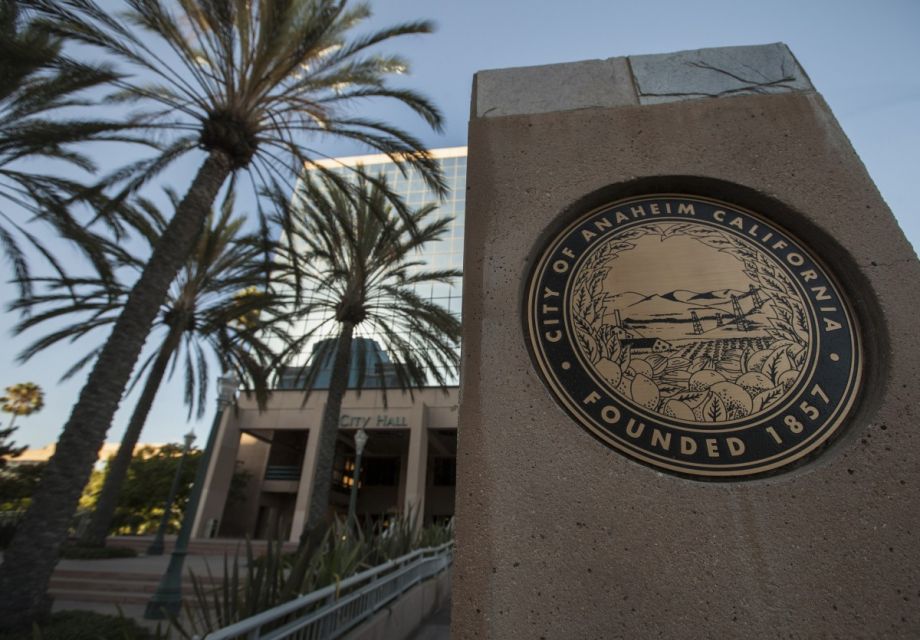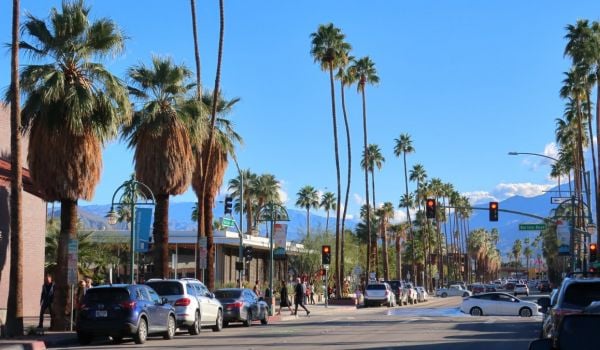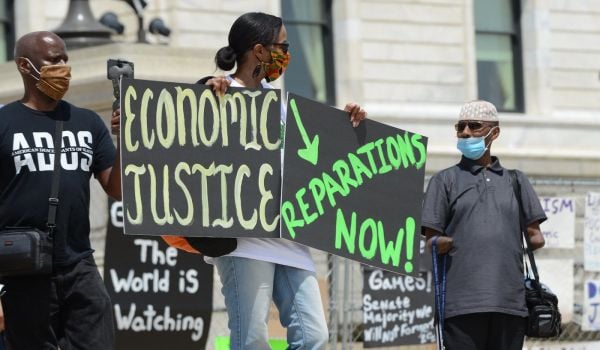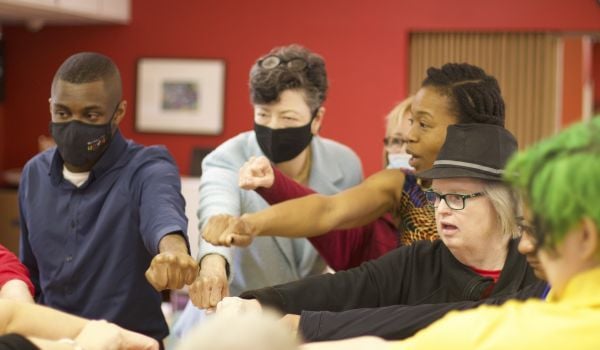On the surface Anaheim, California might not appear all that similar to Ferguson, Missouri. But in 2012, two fatal shootings of Latino men by Anaheim police led to violent protests that, as in Ferguson, exacerbated tensions between white residents who are overrepresented in local government and on the police force, and a newer minority-majority electorate. As was recently noted of Ferguson, representation matters in cities — especially in places that have gone through significant population shifts.
Fifty-three percent of Anaheim’s population is Latino, and currently, there aren’t any Latino City Council members. (Ferguson’s population is 67 percent African-American with one black city council member.) This November, there’s a measure on Anaheim’s ballot to change the city council’s election process from “by large” — all citizens now vote on all open city council seats — to a “by districts” system in which council members would have to live in the geographic district that they represent.
“The votes at the city council on recent economic development projects did not reflect the voices of multiple communities in the city,” says Ann Werboff, executive director of Orange County Communities Organized for Responsible Development (OCCORD), an organization that has been advocating for the change. She says that OCCORD’s support for by-district elections was not a direct response to the police shootings in 2012, but that the violence “added a real sense of urgency.” OCCORD began rallying around this issue after determining there might be a “structural or root cause we needed to look at” that was polarizing Anaheim’s decision-makers and an increasingly diverse voter base.
“It has tended to be the case in the United States that districted systems do a better job at drawing in representatives from traditionally underrepresented groups,” says Jessica Trounstine, professor of political science at University of California Merced. She says that districted systems have historically been more effective when there is high voter turnout. The Washington Post took a recent look at her work, which shows how Latinos and Asian-Americans are underrepresented in city councils across the country, while African-Americans tend to be more represented in cities that are majority African-American. In the scatter plots below, the diagonal line shows “ideal” representation. Dots above the line show overrepresentation and dots below the line show underrepresentation.
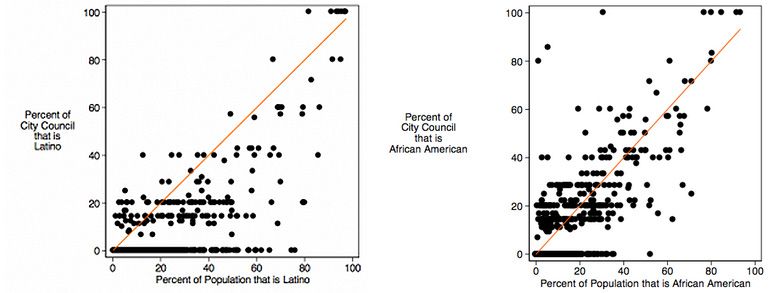
(Source: Jessica Trounstine/ICMA)
Trounstine says that neighborhood concentration is a factor in the overrepresentation of African-Americans at the city council level and that “in places where Latinos are very segregated, then a districted system is much more likely to result in a Latino member of city council or school board, or other legislative bodies.”
Rosalind Gold, of the National Association of Latino Elected and Appointed Officials (NALEO), says that challenges to at-large systems are so important because they are “about providing the Latino community a fair opportunity to make its voice heard at the polling place.”
She points out recent similar challenges to “at-large” systems in California cities of Compton and Palmdale as progress in correcting historic gaps in representation. She adds, “One of the things you have to do to prevail in a California Voting Rights Act case is to show that Latino voter preferences are different than non-Latinos.”
Anaheim (population in 2012: 343,248) is the largest city in California still currently operating with an “at-large” city council. Werboff says that OCCORD is working with other organizations like Orange County Congregation Community Organization, Korean Resource Center and others to make sure that not just Latinos, but all of Anaheim’s communities can voice their preferences.
Since the 2012 shootings, there have been other shifts toward inclusion. Raul Quezada became the first Latino police chief and has made transparency and an open dialogue with Anaheim community members a priority. This month, the city council unanimously approved the $1.1 million purchase of body cameras for police officers to wear, in an effort to prevent some of the frustration, confusion and grief caused by events in their city’s history as well as Michael Brown’s death in Ferguson.
Trounstine points out that there are many reasons that voting blocs can be motivated to seek the change from an at-large to a district city council. She can see how “a particularly egregious moment where an underrepresented minority group feels activated by an outcome” could amplify something like the movement for a change in Anaheim. “A lot of time, police are involved because of the history of police and minority relations in the United States,” she explains. The ripple effects of the Ferguson protests might have a similar impact on closing the representation gaps there, and in other places, because, as Trounstine notes, “Cities pay attention to what happen in other cities.”
The Equity Factor is made possible with the support of the Surdna Foundation.

Alexis Stephens was Next City’s 2014-2015 equitable cities fellow. She’s written about housing, pop culture, global music subcultures, and more for publications like Shelterforce, Rolling Stone, SPIN, and MTV Iggy. She has a B.A. in urban studies from Barnard College and an M.S. in historic preservation from the University of Pennsylvania.


